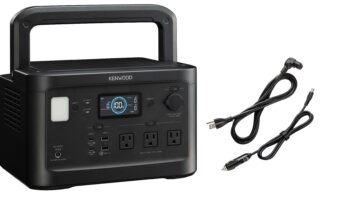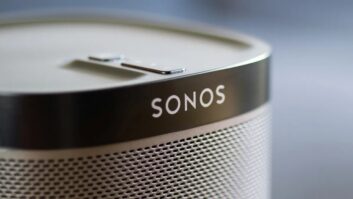While the dog days of summer might bring a slowdown in store traffic, the headquarters and back offices at Best Buy, Circuit City and RadioShack are bustling with activity as the chains engage their best-laid plans for growth and profitability going forward.
What follows is a look at the recent performance and the near- and long-term strategies of CE’s Top Three specialty chains based on recent quarterly reports, analyst observations and presentations to shareholders during annual meetings.
Best Buy
Best Buy’s play book has grown increasingly complex during the past two years as it acquired Musicland, Magnolia Hi-Fi and Future Shop. But underlying the strategies for each segment is the goal of sharing best practices throughout the company and laying the groundwork for a converging digital world at home, at work and in the car.
For Best Buy Stores, the immediate goal is to complete the build out of locations in the United States — expected to top out at 800 — and to enter the Canadian market this fall with the first of some 65 stores. With most large markets already saturated with Best Buy’s big boxes, the company is turning to a new 30,000 square foot format for mid-size markets and will debut a pair of 20,000 square foot prototypes for smaller markets in October.
On the product front, Best Buy has recommitted itself to the major appliance category through improved assortment and better operational systems, which it believes can help double its market share in white goods to 10 percent.
Banking on explosive growth in HDTV and plasma and LCD displays during the next five years, Best Buy is also redesigning its video departments to better demonstrate the benefits of those products. Tests begin this fall, with a nationwide rollout to follow. The company is also considering offering in-home installation service for plasma TVs.
Meanwhile, Musicland can expect a significant expansion of its entertainment software stores into small and rural markets while adding more video games, DVD software and personal electronics to help blunt the downturn in sales of recorded music. Longer term, the division may enter other entertainment areas like satellite dishes, satellite radio and concert ticket sales.
Its upscale stablemate, Magnolia, is envisioned as a 150-store chain that could eventually generate $3 billion annually, while Future Shop is being rebuilt in the image of Best Buy, replete with enhanced inventory management, advertising effectiveness and complete solutions selling.
Circuit City
Circuit City’s first quarter sales grew 13 percent to $2.14 billion and same store sales soared 12 percent thanks to improved customer service, better in-store merchandise displays, a stronger inventory position and aggressive promotions, the company said.
According to president/CEO Alan McCollough, the gains were attributable in large part to such recently launched initiatives as enhanced sales training, better in-store merchandise displays and a stronger inventory position in a number of product categories.
Also contributing to Circuit’s improving sales — and to competitors’ anxiety levels — were aggressive promotions in traffic-building categories and on entry-level consumer electronics.
As part of its drive to “create an exceptional customer experience in our stores,” the company also eliminated restocking fees on returned products. The policy change was trumpeted in marketing programs that focused on the benefits of Circuit City procedures such as easy returns and customer receipt tracking.
More recently, the chain completed the initial phases of a video department remodeling program planned for roll out to approximately 300 Circuit City superstores this year, and has upgraded the lighting in more than 100 units. “We are pleased with the progression of the remodeling process,” McCollough said, “as well as with the initial enthusiasm shown by both customers and sales counselors.”
He added that the company now anticipates the remodeling process can be completed in approximately one week per store, rather than its initial expectation for a two-week retrofit.
RadioShack
Building on its core batteries, parts and accessories strategy, RadioShack plans to widen its digital product mix, add more video gaming accessories and remodel its stores to better showcase key categories.
To that end, the company will offer a wider array of low margin digital devices like PDAs, digital cameras, MP3 players and other portable audio products under such brands as Aiwa, Fuji and Olympus to help drive traffic and create new opportunities for add-on sales of more profitable accessories.
To counter the compressed margins of digital portables, RadioShack will provide its sales associates with specialized training and new pay plan incentives to ensure that they promote the purchase of accessories with every sale.
The latest CE approach is part of a new strategy dubbed Anchors/Participatory and Opportunistic Product Categories/Start, Stop, Strengthen, or APOS, which was outlined to shareholders during the company’s recent annual meeting.
RadioShack’s two anchor businesses remain parts/batteries/accessories and wireless communications. The former will benefit from new advertising that spotlights such margin-rich products as nitrogen-filled, gold plated cables, and a greater focus on batteries that will include repositioned displays and a new line designed for use with digital products.
The “participatory” part of the equation includes such products as cordless phones, TV antennas and radio control cars, which boast average gross margins of 48 percent. RadioShack will goose the toy and gift side of the segment by adding 25 percent more new products annually and expanding it from a seasonal to a year-round business. Stores will also carry a better selection of video gaming accessories in order to attract younger consumers.
“Opportunistic” is the designation given to traffic drivers, including the new assortment of digital products and satellite TV. Specifically, RadioShack is beefing up portable audio with the introduction of Aiwa branded products, which will allow it to be more competitive on style and price, and the company will also be showcasing new digital cameras from Olympus and Fuji. What’s more, RadioShack remains the only national retailer to offer both DISH and DirecTV.
“Stop, Start, Strengthen” refers to improved productivity, a supply chain management initiative, and a new resource allocation strategy that includes direct marketing, anchor-specific advertising and a store remodeling program.
The retrofits, which began rolling out this summer, will free up 10 to 15 linear feet of store space that will be devoted to high-margin accessories and will better showcase new merchandise.
Best Buy’s Sales Mix
Circuit City’s Sales Mix












